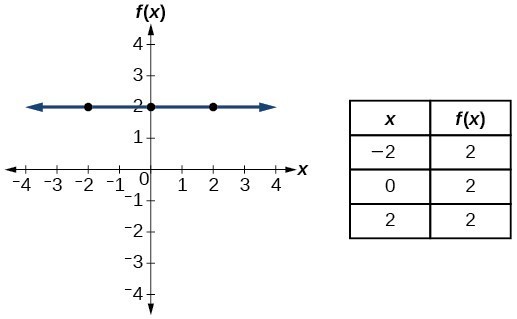Measuring instruments have been pivotal in the advancement of various scientific disciplines. Their accuracy and reliability hinge significantly on control mechanisms that govern their operation. But what precisely does “control” encompass in the realm of measuring instruments, and how does it fundamentally influence the integrity of measurements and data collected? This inquiry prompts an exploration into the multifaceted nature of control within the context of metrology— the science of measurement.
At its core, control in measuring instruments refers to the mechanisms and methodologies utilized to maintain measurement accuracy and precision. These controls can be categorized into several key components: calibration, standardization, feedback loops, and error correction. Each of these aspects plays an integral role in ensuring that the data produced by measuring devices holds fidelity and relevance in practical applications.
Calibration constitutes the foundation of control in measurement instruments. This process involves aligning an instrument’s output with a known standard. Think of it as a delicate tuning of a musical instrument, where the objective is to achieve harmony with a universal pitch. Calibration is typically performed using standards that have been meticulously defined and validated, such as those set forth by metrological institutes. This aligns measurement devices to internationally accepted norms, a practice that enhances comparability across different studies and applications.
However, the act of calibration is not a one-time endeavor. Instruments can drift over time due to various factors such as environmental changes, mechanical wear, or the inherent properties of the materials involved. Consequently, routine recalibration becomes imperative. This maintained fidelity ensures that the measurements remain consistent over time, ultimately enhancing the reliability of experimental results.
Standardization bears a close relation to calibration yet warrants distinct consideration. It refers to the establishment of norms and procedures, allowing various instruments to achieve consistency across different settings and usages. For instance, consider how thermometers can vary in measurement systems—Celsius, Fahrenheit, or Kelvin. The process of standardization establishes the necessary conversions and methodologies to ensure that a temperature reading means the same across different contexts. This uniformity is particularly crucial in scientific communication, where ambiguity could lead to erroneous conclusions.
In examining control mechanisms, one cannot overlook feedback loops, which are essential to the dynamic regulation of measuring instruments. Feedback loops enable a system to adjust its operations based on the output produced. For example, in an electronic measuring device, if an initial measurement deviates from an expected range, the device may internally adjust its parameters to correct for apparent discrepancies. This self-regulation fosters an adaptive approach to measurement, permitting ongoing fine-tuning without requiring constant external intervention.
Alongside feedback, the methodology of error correction is equally crucial in the function of control in measuring instruments. Instruments are susceptible to systematic errors, random errors, and operational errors, all of which can compromise the reliability of the readings. Error correction techniques help to identify and mitigate these discrepancies. Statistical processes, such as regression analysis or averaging multiple readings, become invaluable here. The nuanced application of these techniques transforms raw data into meaningful information, reinforcing the integrity of the scientific process.
The interplay between control mechanisms and instrument design is another element requiring scrutiny. The reliability of any measuring instrument is intrinsically tied to its engineering. Advanced materials used in the construction of these devices can influence their accuracy and durability. For instance, high-precision optical devices utilize specially coated glass to minimize distortions, thereby enhancing measurement fidelity. As a result, the choice of materials is a critical consideration in the quest for reliable measurements.
Furthermore, the rise of digital technology has profoundly transformed the landscape of measurement instruments. Contemporary measuring devices often integrate sophisticated algorithms that facilitate more advanced control methodologies. For instance, digital voltmeters utilize numerical displays that enhance user comprehension while providing built-in calibration options that automate the frequently cumbersome recalibration process. This shift not only enhances user experience but also democratizes access to precision measurement.
The implications of effective control extend beyond the realms of scientific inquiry; they permeate various industries, including manufacturing, healthcare, and environmental science. In manufacturing, precise measurements dictate quality control, ensuring that products meet design specifications. In healthcare, accurate blood glucose monitors and other medical devices can mean the difference between effective treatment and detrimental outcomes. In environmental science, measuring pollutants accurately is paramount in assessing regulatory compliance and protecting ecosystems.
However, while the notion of control might induce confidence, it is crucial to acknowledge the inherent limitations that accompany any measurement process. Every measuring instrument has thresholds beyond which accuracy cannot be guaranteed. Understanding these limitations cultivates a mindset of critical analysis, essential for sound scientific practice. Acknowledging the complexities and uncertainties in measurements leads to more robust scientific discussions and interpretations, ultimately enriching the pursuit of knowledge.
To surmise, the role of control in measuring instruments is both intricate and crucial. From calibration and standardization to the adoption of feedback mechanisms and error corrections, control mechanisms breathe life into the very fabric of measuring devices. They enhance the accuracy and reliability of data, fostering trust in scientific findings. As measuring technology continues to evolve, the ongoing exploration and understanding of control will undoubtedly warrant further inquiry, promising to illuminate our understanding of the measured world around us.










